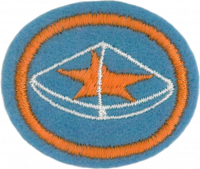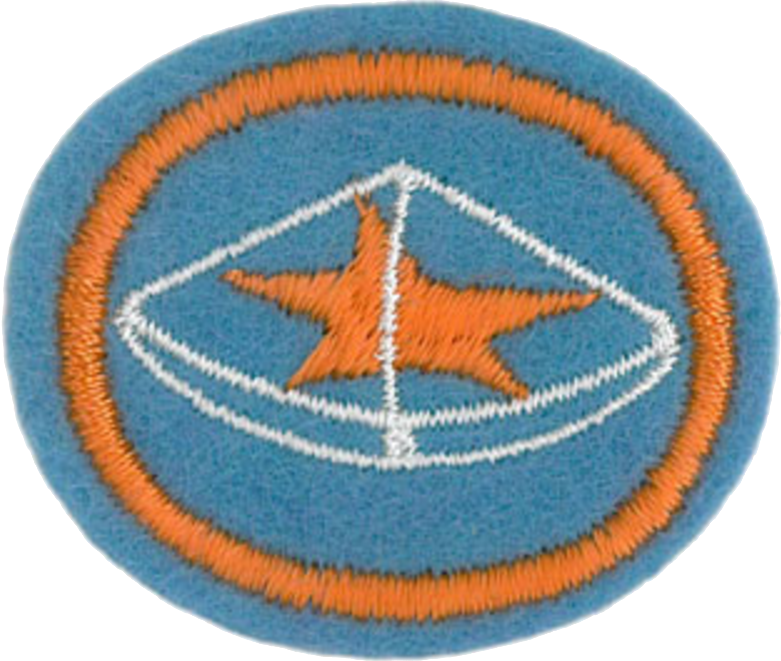|
|
| Line 49: |
Line 49: |
| | {{CloseReq}} <!-- 5 --> | | {{CloseReq}} <!-- 5 --> |
| | {{ansreq|page={{#titleparts:{{PAGENAME}}|2|1}}|num=6}} | | {{ansreq|page={{#titleparts:{{PAGENAME}}|2|1}}|num=6}} |
| − | <noinclude><div lang="en" dir="ltr" class="mw-content-ltr"> | + | <noinclude></noinclude> |
| − | </noinclude> | + | <!-- 6. ¿Qué significa polimerización? --> |
| − | <!-- 6. What is meant by polymerization? --> | |
| − | Polymerization is a chemical reaction in which monomers are assembled to form long chains or three-dimensional networks. In short, this is the chemical process that converts the liquid resin into the solid plastic.
| |
| − | </div>
| |
| | | | |
| − | <div lang="en" dir="ltr" class="mw-content-ltr">
| + | <noinclude></noinclude> |
| − | <noinclude> | |
| − | </div></noinclude>
| |
| | {{CloseReq}} <!-- 6 --> | | {{CloseReq}} <!-- 6 --> |
| | {{ansreq|page={{#titleparts:{{PAGENAME}}|2|1}}|num=7}} | | {{ansreq|page={{#titleparts:{{PAGENAME}}|2|1}}|num=7}} |
| − | <noinclude><div lang="en" dir="ltr" class="mw-content-ltr"> | + | <noinclude></noinclude> |
| − | </noinclude> | + | <!-- 7. Preparar e incrustar dos objetos adecuados para la incrustación. Objetos de la naturaleza pueden ser incoroporados en una o más piezas de fundición. --> |
| − | <!-- 7. Prepare and embed two nature items suitable for embedding. Nature items may be embedded in one or more castings. --> | |
| − | The first step is to choose the nature items to be embedded. Popular choices include dead insects, leaves, flowers, rocks, seeds, nuts, and shells. Once the items have been selected, it is time to prepare a work area.
| |
| − | </div>
| |
| | | | |
| − | <div lang="en" dir="ltr" class="mw-content-ltr">
| + | {{clear}} |
| − | Cover the work surface with newspapers or plastic bags. You can also use an old pizza box or a large piece of cardboard as a work surface. Once this has been done, put on your protective gear (goggles, apron, and gloves).
| |
| − | </div>
| |
| | | | |
| − | <div lang="en" dir="ltr" class="mw-content-ltr">
| + | {{clear}} |
| − | Fill your mold with water, and then dump the water into a measuring cup. This will tell you exactly how much resin you will need, though you will want to divide that up to form multiple layers. For example, if your mold has a volume of six ounces and you want to pour two layers, you will need to mix three ounces in the first batch, and three more in the second.
| |
| − | </div>
| |
| | | | |
| − | <div lang="en" dir="ltr" class="mw-content-ltr">
| + | {{clear}} |
| − | Carefully dry the mold and examine it for imperfections (such as scratches). Any imperfections in the mold will be transferred to the cast item. If you find an imperfection, your only options are to either live with them, or use a different mold. Once you are satisfied with the mold, spray it with mold release. Some people do not use mold release in order to save time, or money, but this is a false economy. Mold release greatly increases the number of times you can reuse the mold, and the time it takes to spray it into the mold is a tiny fraction of the amount of time it will take you to get the casting out of the mold once it cures. Hence, we highly recommend using mold release.
| |
| − | </div>
| |
| | | | |
| − | <div lang="en" dir="ltr" class="mw-content-ltr">
| + | {{clear}} |
| − | Mix the resin in accordance with the general instructions given in requirement 4, but be sure to read the mixing instructions that came with the resin for specifics.
| |
| − | </div>
| |
| | | | |
| − | <div lang="en" dir="ltr" class="mw-content-ltr">
| + | {{clear}} |
| − | For a two layer casting, fill the mold with resin to the half way point. Then let the resin cure for about 25 minutes so that it forms a gel. You make probe the resin with a craft stick to make sure it's the right consistency, but ''do not'' use your finger for this. Doing so risks spoiling the resin.
| |
| − | </div>
| |
| | | | |
| − | <div lang="en" dir="ltr" class="mw-content-ltr">
| + | {{clear}} |
| − | After the first layer has gelled, carefully place the embeddable object (or objects) on the surface of the resin. You may wish to do this with tweezers. Then mix a second batch of resin, ''noting the instructions on the container''. The second (and successive batches) of resin usually has a different ratio of resin to catalyst. Once it is properly mixed, pour it over the embedded object. Place the mold some place where it will be out of the way for the next 24 hours and let it cure for at least that amount of time. After 24 hours, you should be able to pop the cast out of the mold (you ''did'' remember to use mold release, didn't you?).
| |
| − | </div>
| |
| | | | |
| − | <div lang="en" dir="ltr" class="mw-content-ltr">
| + | {{clear}} |
| − | Place a very fine grade sand paper on a flat surface (a piece of plate glass works wonderfully), and then sand any rough spots on the cast item by gently rubbing it over the sand paper. Then buff it with a soft cloth.
| |
| − | </div>
| |
| | | | |
| − | <div lang="en" dir="ltr" class="mw-content-ltr">
| + | <noinclude></noinclude> |
| − | <noinclude> | |
| − | </div></noinclude>
| |
| | {{CloseReq}} <!-- 7 --> | | {{CloseReq}} <!-- 7 --> |
| | {{ansreq|page={{#titleparts:{{PAGENAME}}|2|1}}|num=8}} | | {{ansreq|page={{#titleparts:{{PAGENAME}}|2|1}}|num=8}} |
| − | <noinclude><div lang="en" dir="ltr" class="mw-content-ltr"> | + | <noinclude></noinclude> |
| − | </noinclude> | + | <!-- 8. Hacer tres piezas moldeadas con al menos un elemento incrustado en cada pieza fundida. --> |
| − | <!-- 8. Make three castings with at least one item embedded in each casting. --> | |
| − | These embeddables do not need to be nature items. You can cast any small item you like. Many people cast coins or small toys. Follow the instructions given in requirement 7.
| |
| − | </div>
| |
| | | | |
| − | <div lang="en" dir="ltr" class="mw-content-ltr">
| + | <noinclude></noinclude> |
| − | <noinclude> | |
| − | </div></noinclude>
| |
| | {{CloseReq}} <!-- 8 --> | | {{CloseReq}} <!-- 8 --> |
| − | <noinclude><div lang="en" dir="ltr" class="mw-content-ltr"> | + | <noinclude></noinclude> |
| − | </noinclude> | + | ==Referencias== |
| − | ==References== | + | [[Category:Adventist Youth Honors Answer Book/es]] |
| − | *http://fun.familyeducation.com/crafts/handicrafts/47912.html
| + | <noinclude></noinclude> |
| − | *http://www.diynetwork.com/diy/ca_crafts_projects/article/0,2041,DIY_13721_2273425,00.html
| |
| − | *http://www.craftbits.com/viewProject.do?projectID=2056
| |
| − | *http://www.delviesplastics.com/mm5/merchant.mvc?Screen=CTGY&Store_Code=DPI&Category_Code=Casting_Resin
| |
| − | [[Category:Adventist Youth Honors Answer Book|{{SUBPAGENAME}}]] | |
| − | <noinclude> | |
| − | </div></noinclude>
| |
| | {{CloseHonorPage}} | | {{CloseHonorPage}} |


